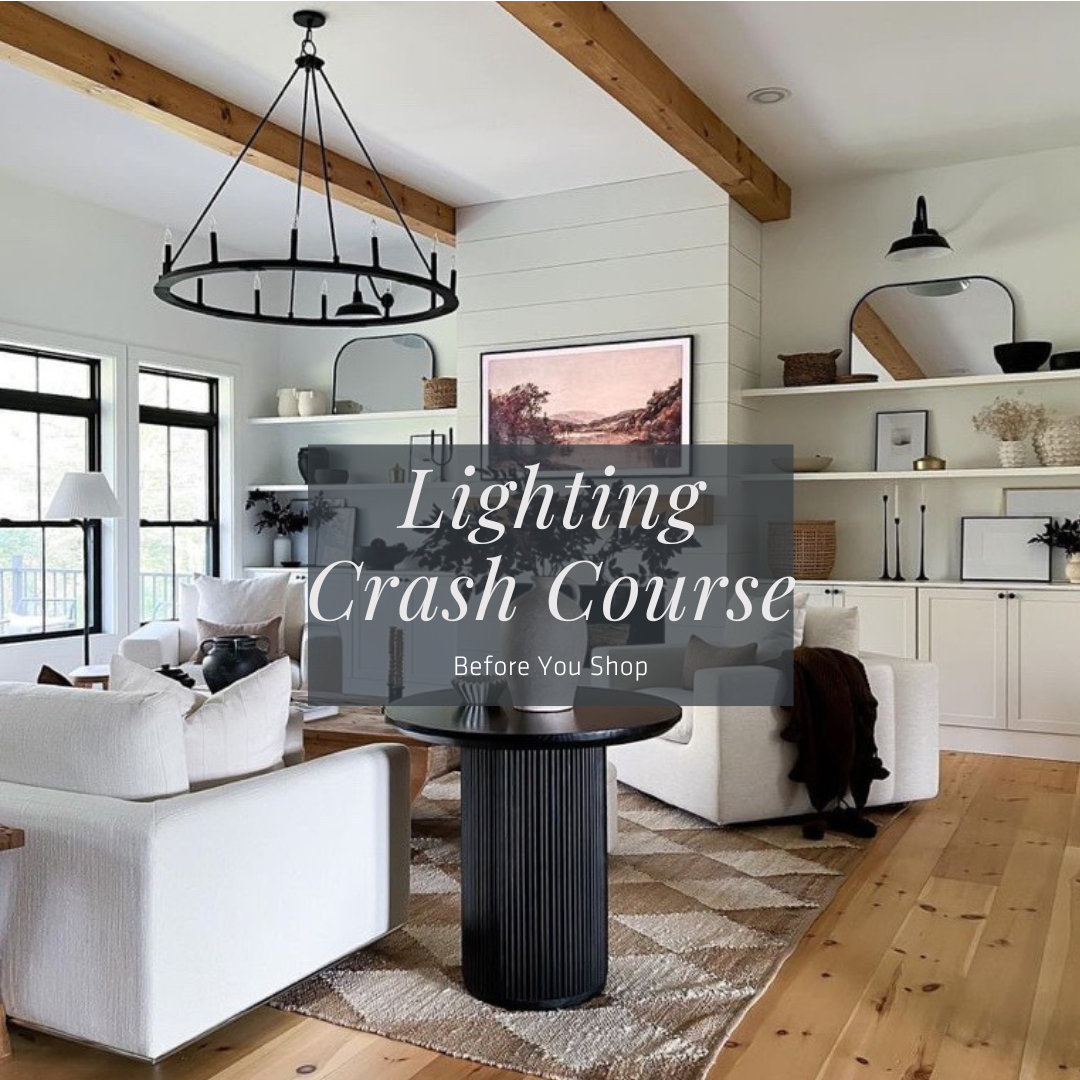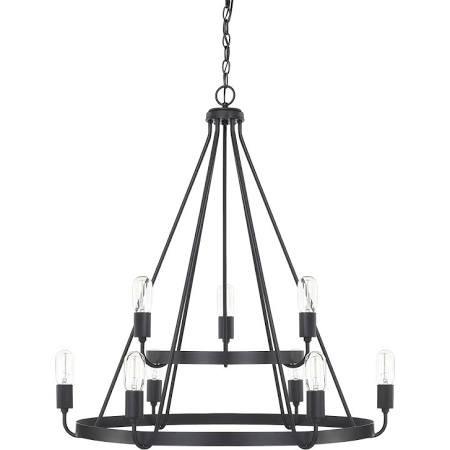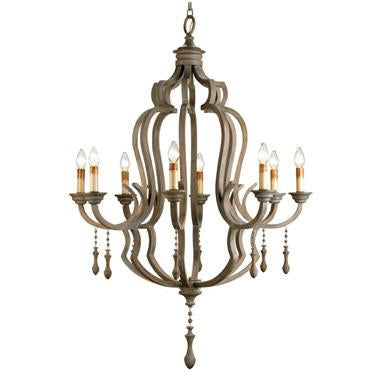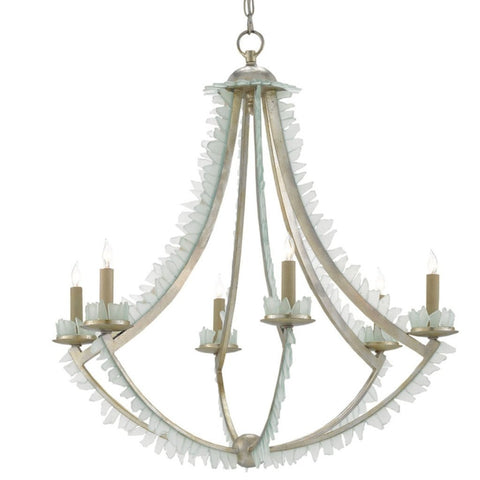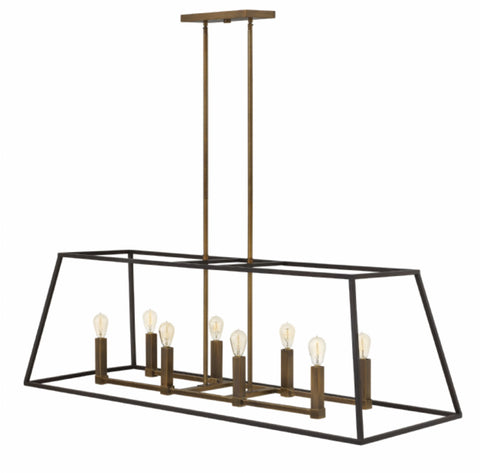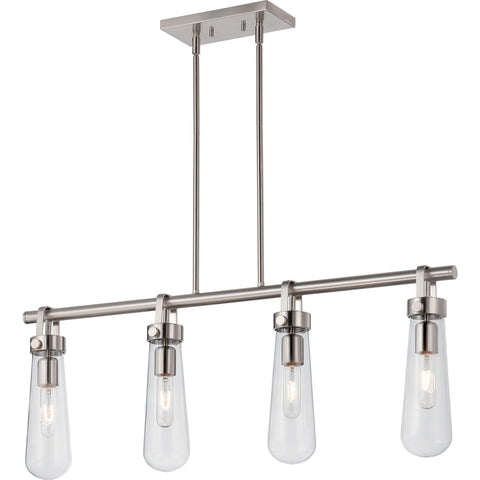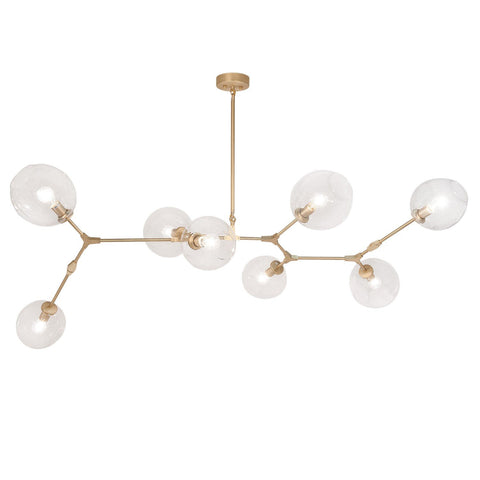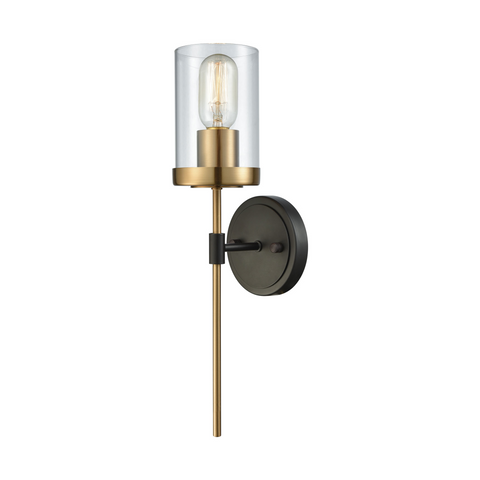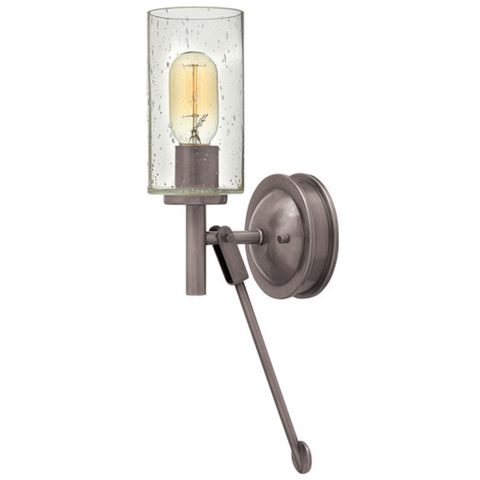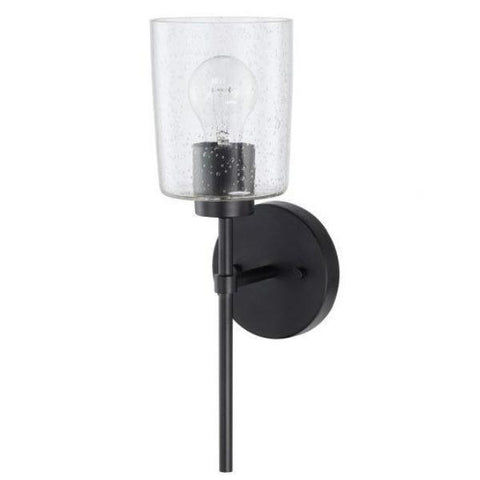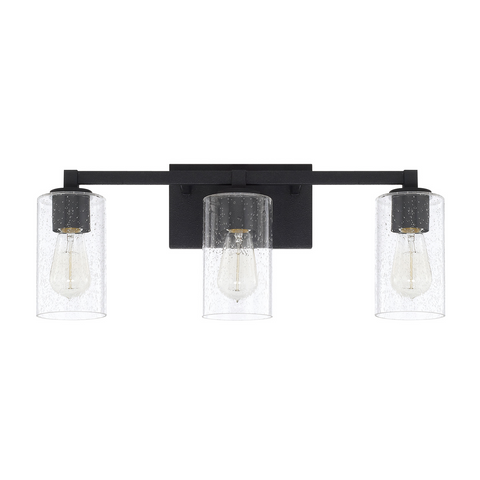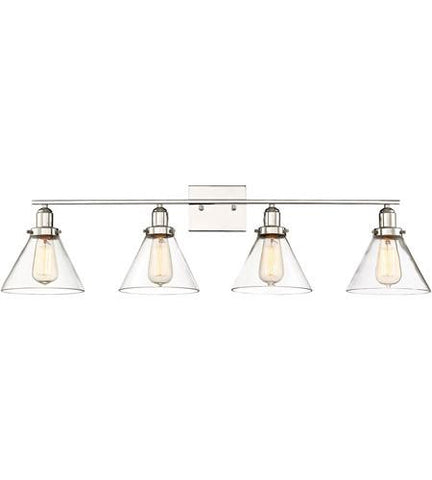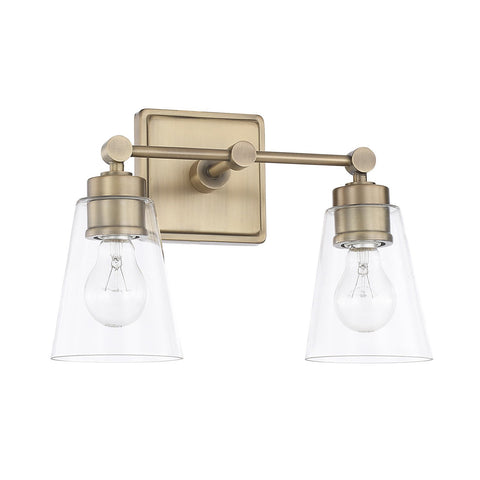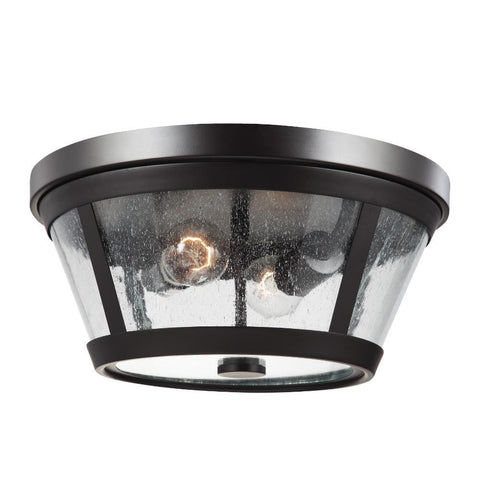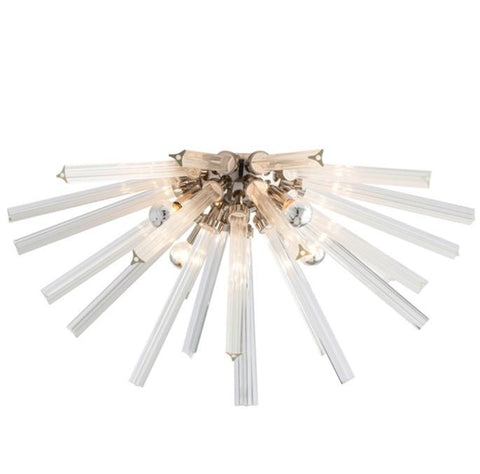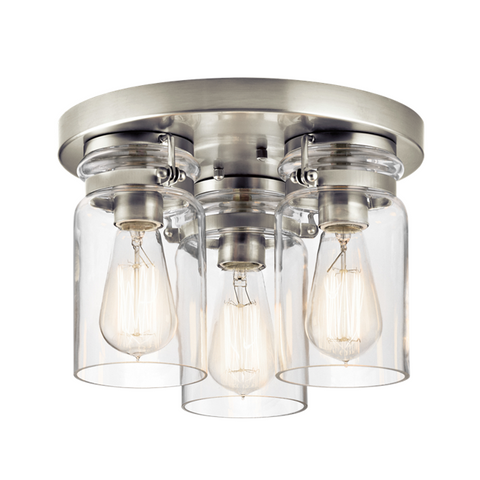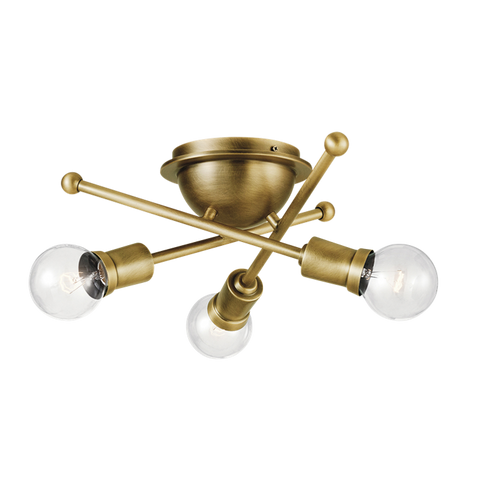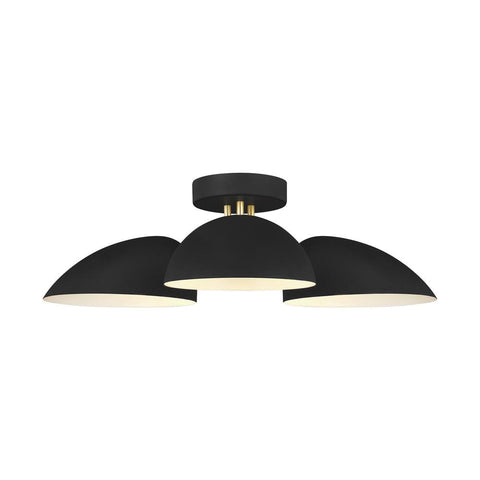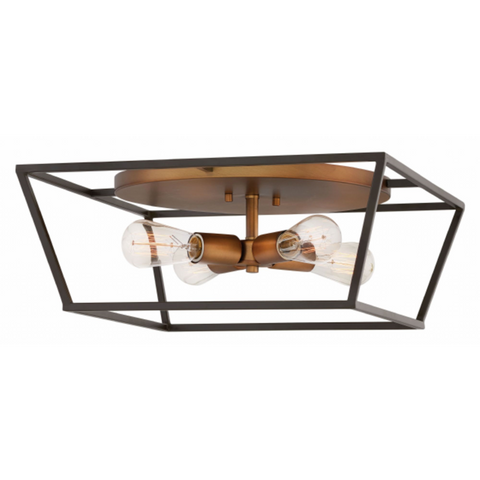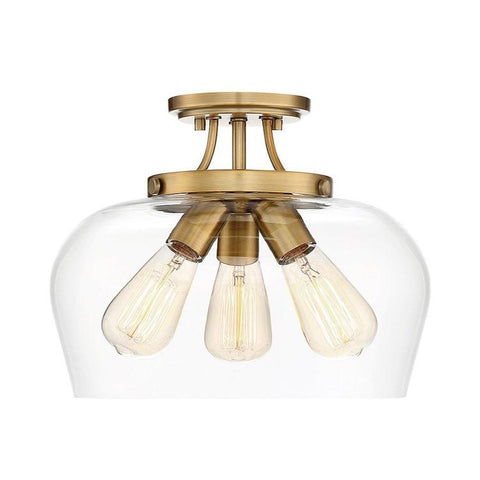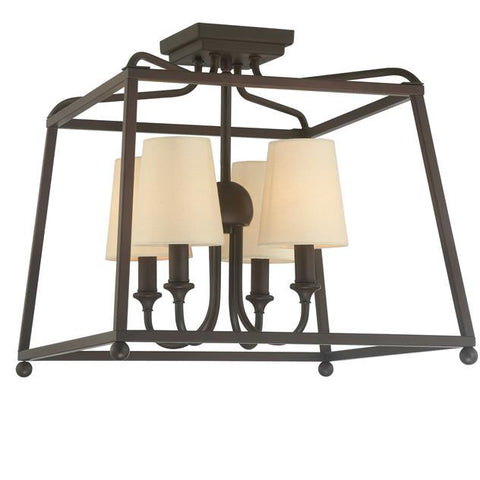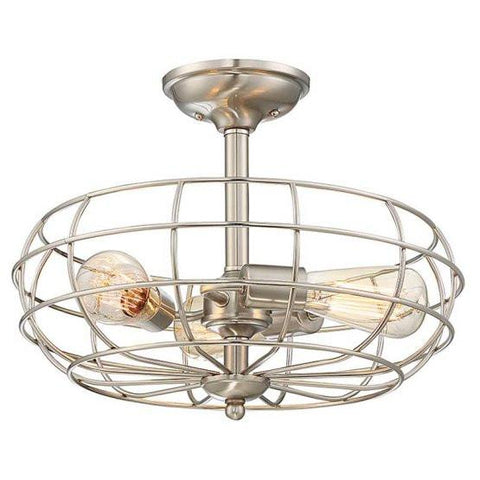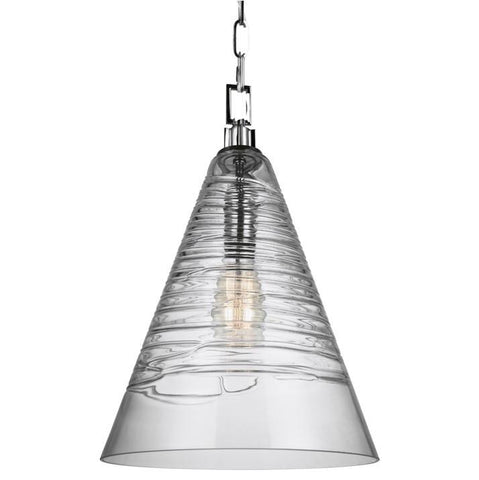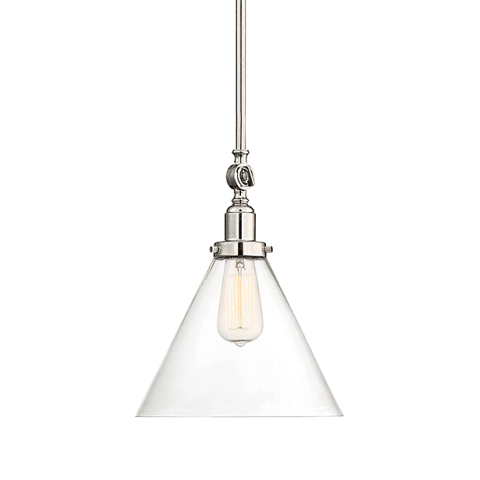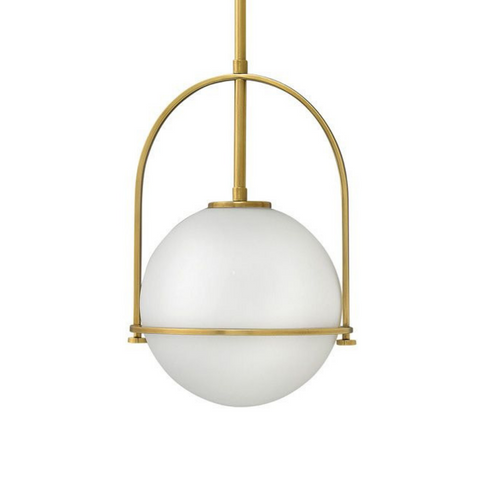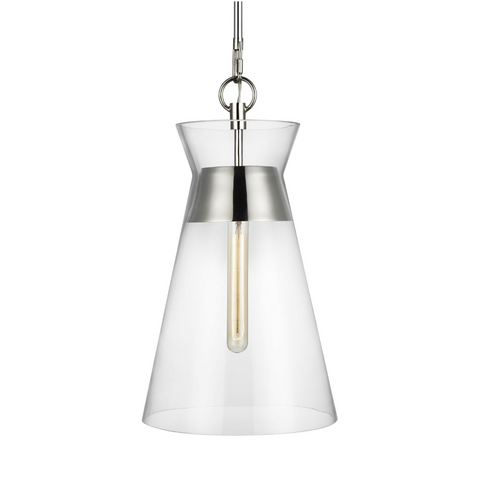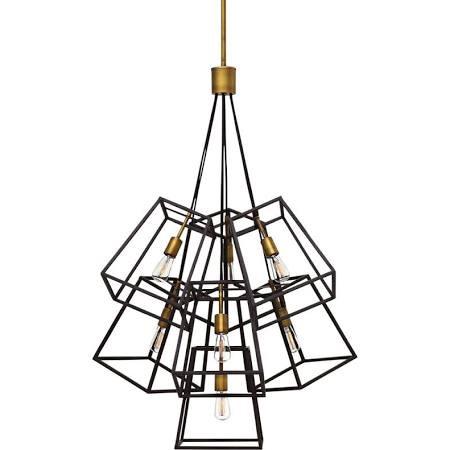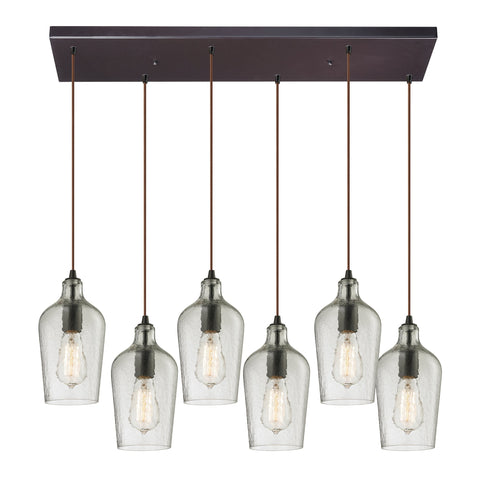Here’s a crash course on light fixtures to help you purchase the right light for your space, with some common lighting terms to make you a more informed shopper. If you still have any questions you can always reach out to one of our lighting experts.
We are here to help you with some of the more obscure lighting terms you may not already be familiar and help identify what they mean.
Types of Light Fixtures
When you start your shopping, you’ll typically be prompted to filter your search down to the type of fixture you’re looking for. In order to help you make the most informed decision, here are some of the most popular fixture types, and their best application:
 1. Chandelier
1. Chandelier
When you think of types of lighting, chandelier is typically the first thing that comes to mind. Chandeliers are decorative hanging lights that are typically large in size with arms for several light bulbs or candles.
These are ideal for dining rooms, living rooms, foyers and some bedrooms with higher ceilings.
Some of our top picks for chandeliers include:
 2. Linear Chandelier
2. Linear Chandelier
Linear Chandeliers are ideal for long narrow spaces and most commonly complement a rectangular table, such as over a dining room table or kitchen island.
A few of our favorite linear chandeliers are:
 3. Sconces
3. Sconces
Perfect for a space such as a bathroom or hallway, sconces are lighting fixtures that are installed on and supported solely by a wall. They can serve both practical and decorative purposes in the various spaces throughout your home.
Some of our top sconce picks include:
 4. Bath + Vanity Lights
4. Bath + Vanity Lights
Used in bathrooms and powder rooms, vanity lights are multi-light fixtures that are typically installed horizontally above a mirror. There are also some styles of vanity lights that can be mounted vertically on either side of a mirror.
A few of our favorite vanity lights are:
 5. Flush Mount
5. Flush Mount
Ideal for rooms or hallways with low ceilings, flush mount lighting may be the way to go. They are ceiling lights that have either a very small gap or no gap between the light fixture and the ceiling.
Our top picks for flush-mount lights include:
 6. Semi-Flush Mount
6. Semi-Flush Mount
Similarly to flush-mount lights, semi-flush mount are ideal for low ceilings as well. These lights are close to the ceiling, but there is a small gap between the light fixture and the ceiling (typically two to four inches) resulting in a visible decorative canopy.
Some of our top picks when it comes to Semi-Flush Mount lights include:
Shop All Semi-Flush Mount Lights >
 7. Pendant
7. Pendant
A common light for spaces that typically don’t need a very large fixture, pendants are light fixtures that are suspended from the ceiling with a single shade. These can be used as a single light in a space or in multiples over a table or island.
Some of our favorite pendant lights include:
 8. Multi-Pendant
8. Multi-Pendant
Multi-pendants are great pieces to make a statement in a foyer or other areas in your home. They typically feature single-shade lights that are bundled and suspended at different heights from the main mount.
Our top picks for show-stopping multi-pendants are:
Shop all Multi-Pendant Lights >
Mounting Your Light: Downrods, Chain Hung, Cord Hung
There are three main ways that your lighting hangs from the ceiling, by a downrod, chain, or fabric cord.
Downrods are also referred to as a “stem,” this is used to suspend a pendant light or a chandelier further from the ceiling so it can be hung at the desired height. These are installed between the fixture’s canopy and the light itself. Down rods and chain can vary in length. Many hanging lights will have multiple pieces available so you can mix and match lengths – allowing you to get the length just right for your space.
Alternatively, some lights may use a chain or fabric cording that can be adjusted to the height you need for your space, and you can easily adjust based on your room height.
If you aren’t sure how long your chain or downrod should be for your light, take a look at our Lighting Size Guide so you can determine how much room you should allow based on the size of the room you’re placing the light in.
Light Source & Lamping
At the end of the day, the main purpose of buying a light fixture is to illuminate the rooms in your home. While shopping, you will likely encounter these common terms that describe the light source of various fixtures:
1. Bulb Sizes & Types
There are two main types of bulbs that will come with your light that you may see:
- Candelabra: Often found in chandelier lights, using E12 bulbs.
- Medium: These are more standard lights that you may see labeled as using A19 or E26 bulbs
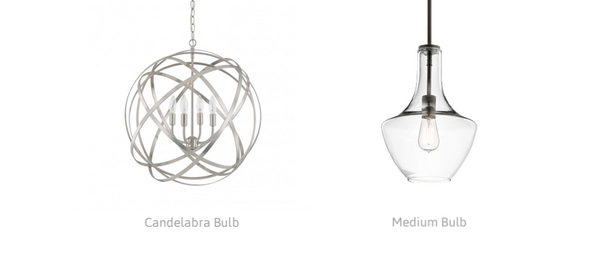
2. Wattage
The wattage rating will tell you how much power the bulbs can draw. You don’t want to use a bulb that exceeds the wattage rating on a light fixture but you can always go lower to reduce the amount of light being put out by the fixture.
3. Dimmable
Almost all light fixtures are compatible with dimmers. The bulbs that you use are more likely to be a factor in whether or not you can dim your lights, so make sure to check the bulbs that you go with to ensure they too are dimmable and compatible.
4. Integrated LED
This just means that the LED is built into the fixture, you don’t have to buy or change bulbs. Since integrated LED units can last for 20+ years (average of 4 hours per day of use), there’s really not a need to replace the bulb. However, if the LED does go out, you have to replace the entire fixture.
Most fixtures with integrated LED still come in a traditional bulb version, that way you can decide what bulbs you use in the light and have the ability to replace a bulb if it goes out.
The Anatomy of a Light Fixture
Product descriptions and measurements will often call out specific parts of the light to help you get a better understanding of what makes it special and how large it is. Here are some of the most common terms you may encounter:
 The canopy (ceiling hung lights) or backplate (wall hung lights) provides a decorative cover to hide the mounting point of a light.1. Canopy / Backplate
The canopy (ceiling hung lights) or backplate (wall hung lights) provides a decorative cover to hide the mounting point of a light.1. Canopy / Backplate
2. Downrod / Chain
The downrod is a solid tube that creates distance between your ceiling and the body of a light fixture. It’s also where the wiring is hidden. Chain is also used for this purpose on traditional style fixtures, but doesn’t provide the wire hiding feature you get with a downrod.”
3. Arm
The arm of a light is the part that extends from the body of the light to the bulb(s). This applies to virtually all styles of lights.
4. Shade
The shade is the part of a light that covers the bulb, helps you from looking directly into the light source, and sometimes aids in dispersing the light. Shades can be made of glass, metal, fabric, and other materials.”
5. Finial
Finials were originally used to hold a shade to the body or arm of a light. Some modern fixtures don’t need a final for function but have kept them as a decorative flourishment.
6. Slope Adaptor
Not as common as the other parts of a light, and usually an add-on, the slope adaptor allows you to mount a ceiling fixture to a sloped ceiling.
Measuring Your Light: Fixture vs. Overall Height
There are two things you may often encounter when looking for the height of a light fixture: Fixture Height and OAH or Overall Height.
The OAH measures from the canopy or ceiling attachment to the bottom-most surface of the fixture, so you can tell just how much space you will have after hanging it from your ceiling.
This number may have a range, due to different downrod or chain lengths that come with the light. For example, our Farmhouse Dome Pulley Pendant has a range from 39 to 71 inches based on how you set the height for your room.
Fixture Height will give you the measurement of just the fixture itself, minus the downrod or chain, so you can best determine how much additional height you may need for hanging.
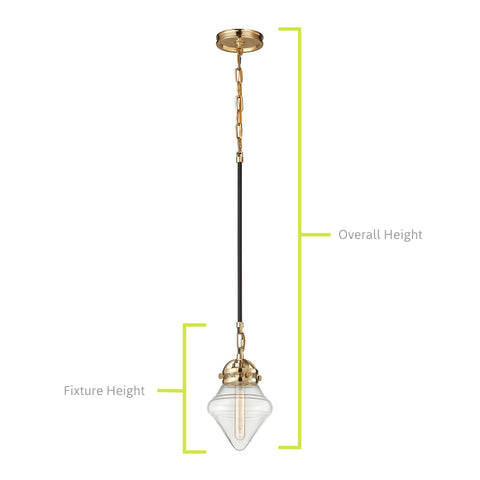
Light Finish
While shopping, you’ll often see various options for the “finish.” Here are three things to keep in mind while selecting the finish for your new light:
1. What part of a light is the finish?
The finish can describe the material type or color of the light fixture. This usually refers to just the body but can sometimes refer to the canopy, arms, and even the shade. Some fixtures, like mixed metals, have multiple finishes.
2. Pictures can be deceiving.
Your monitor or the lighting used to take a picture of a light’s finish can make it look different than it will in your space. This can make a light gold look more silver and a bronze look like a flat black.
3. Some finishes look similar, check the name to be sure.
Chrome and Nickel look a lot alike. Chrome is more like a cooler silver and nickel is a little more warm, like a mix of silver & gold. Because finishes can look a lot alike, make sure to double check the name of the finish and not rely solely on the pictures.
UL Listing
The UL Listing tells you where you can use the light. The three types include:
- Wet is mainly used for uncovered outdoor areas where the light will be in direct contact with water.
- Damp is for use in areas where the air is damp but the light will not be in direct contact with water – think covered patio or bathroom.
- Dry rated lights are for well ventilated areas were any moisture in the air is random and doesn’t last long.


Have any more questions about something you see on our website or any other? Take a look at our full glossary of lighting terms or call or chat with a lighting expert to help get your questions answered!
